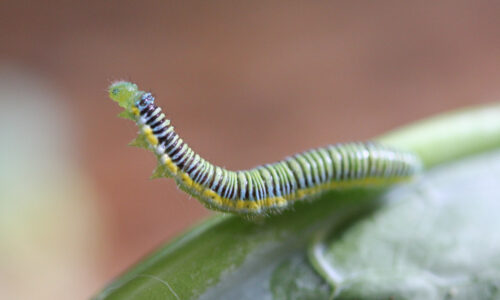Australia’s gum trees, belonging predominantly to the Eucalyptus genus, are iconic symbols of our landscape, celebrated for their towering presence and unique beauty. These resilient trees contribute significantly to our ecosystems and property aesthetics. However, even these seemingly robust giants can suffer from various afflictions. Understanding the common gum tree pests that Australia faces and the underlying gum tree disease causes is crucial for maintaining their vitality. This blog post sheds light on the challenges impacting gum tree health and guides you towards appropriate solutions, particularly concerning eucalyptus tree pest treatment.
Common Gum Tree Pests: More Than Just Leaf Eaters
A major category of problems affecting these majestic trees stems from gum tree insect infestation. These tiny invaders can cause significant stress and visible damage.
- Psyllids: These small, sap-sucking insects cause leaf distortion and leave behind sugary excretions known as “lerps” on leaves. This sugary residue is a tell-tale sign of leaf damage gum tree experiences from psyllid activity.
- Leaf Miners: These larvae tunnel directly within the leaves, creating visible trails and blotches. This results in discolouration and weakened foliage, impairing the tree’s ability to photosynthesise effectively.
- Borers (e.g., Longicorn Beetles): Perhaps one of the most destructive gum tree pests encountered, borers tunnel deep into the wood. This internal damage causes bark damage to eucalyptus trees, can lead to structural weakness, and often signals a severe borer gum tree problem that requires immediate attention.
- Scale Insects: These tiny, immobile sap-suckers attach themselves to branches and leaves. Their feeding can lead to the growth of sooty mould (a black fungus feeding on their sugary excretions) and unsightly, sticky tree sap problems.
- Gum Tree Gall Insects: These insects induce abnormal, often unsightly, growths or swellings (galls) on leaves, stems, or branches. While usually cosmetic, heavy infestations can impact tree vigour.

Understanding Gum Tree Disease Causes
Beyond insects, eucalyptus tree diseases can stem from various pathogens or environmental factors, leading to serious gum tree health problems.
- Dieback: A widespread problem, dieback is a general term for the progressive death of branches, starting from the tips. It’s often a complex issue, linked to environmental gum tree stress (like drought or nutrient deficiencies) or specific fungal pathogens, indicating serious gum tree disease causes.
- Root Rot: Caused by poor drainage or specific soil-borne fungi, root rot leads to the decay of the tree’s root system. This results in gum tree root problems that severely impair the tree’s ability to absorb water and nutrients, leading to overall tree decline and instability.
- Cankers: These are localised dead areas on the bark, typically fungal in origin, which can girdle branches and trunks. Cankers cause severe bark damage to eucalyptus trees, disrupting nutrient flow and potentially leading to the death of affected sections.
- Leaf Spotting Fungi: While often just aesthetic, widespread leaf spotting fungi can cause significant leaf damage gum tree foliage. In severe cases, heavy defoliation can weaken the tree over time, making it more susceptible to other stressors.
- Environmental Stress: Factors like prolonged drought, waterlogging, sudden temperature changes, nutrient deficiencies, or soil compaction can severely weaken gum trees. Such gum tree stress makes them highly susceptible to various gum tree health problems and makes them more vulnerable to typical gum tree disease causes and insect attacks.
Identifying the Signs: When to Seek Expert Help
Early detection is vital for effective eucalyptus tree pest treatment and managing gum tree disease causes. Look out for these key visual indicators: unusual discoloured leaves (leaf damage gum tree), premature leaf drop, progressive branch dieback, abnormal growths or galls, visible holes in the bark, or excessive tree sap problems. If you notice sawdust-like material (frass) or hear clicking sounds coming from the wood, it could indicate a borer gum tree infestation. When these signs appear, a professional tree health assessment is critical.
Managing Gum Tree Problems: Beyond DIY
While basic gum tree care practices like proper watering, mulching around the base, and avoiding trunk damage can promote general tree health, professional intervention is often necessary for severe gum tree insect infestation or advanced gum tree disease causes. Effective eucalyptus tree pest treatment often requires specialised knowledge and equipment. This includes understanding when to use systemic insecticides for borers, targeted fungicides for specific diseases, or implementing comprehensive tree pest management strategies. Flick can help identify the precise nature of the problem affecting your gum trees and advise on the best course of action, often working with certified arborists for complex tree health issues.
Protecting Your Iconic Gum Trees
Our iconic gum trees are a cherished part of the Australian landscape, but they require diligent care to remain healthy and vibrant. Understanding the threats posed by gum tree pests that Australia faces and the various gum tree disease causes is the first step in their protection. Through proactive care and expert diagnosis, you can ensure the long-term gum tree health of these magnificent specimens.
Contact Flick Pest Control today for a tree health assessment or expert advice on managing gum tree pests in Australia and effective eucalyptus tree pest treatment.
Enjoyed this article?
If you found this article helpful, sign up for our free Quarterly Newsletter to receive all our tips and tricks on pest control and washroom hygiene.
Sign Me Up!